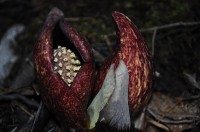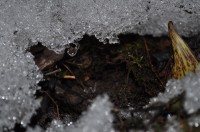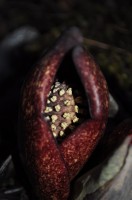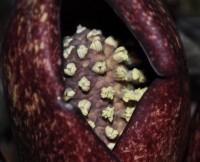In late February one of the best ways to see that spring is on the way, other than Punxsutawney Phil’s shadow, is to take a walk and look for Skunk Cabbage. The flowering plant with an unfortunate odor, hence the name, is commonly found in wetlands, marshes or along stream sides. The rotten meat smell that skunk cabbage emits attracts early insect pollinators, such as flies, stoneflies or bees, to the flower. The odor in the leaves may also serve to discourage large animals from disrupting or damaging the plant. Another way to find skunk cabbage aside from its scent is to search beneath last year’s fallen leaves.
Aside from its unusual smell, the flower of a skunk cabbage produces heat, which can be beneficial to spread the odor throughout the air. The heat can also help to melt away the winter’s snow and ice and allow for the plant to begin growing. This unique plant has small flowers located inside the hooded spathe, or spadix. While the plant can grow 1-2 feet in height, the whole flowering structure is generally 3-5 inches. They reproduce by hard, pea-sized seeds which fall in the mud and are carried away by animals or by floods.
Skunk Cabbage has already been spotted sprouting up around the boardwalk and twin bridges areas of Shaver’s Creek. So if you are in the area, be sure to stop by and take a walk through our wetlands.
Meadow, Spring 2011 Intern




